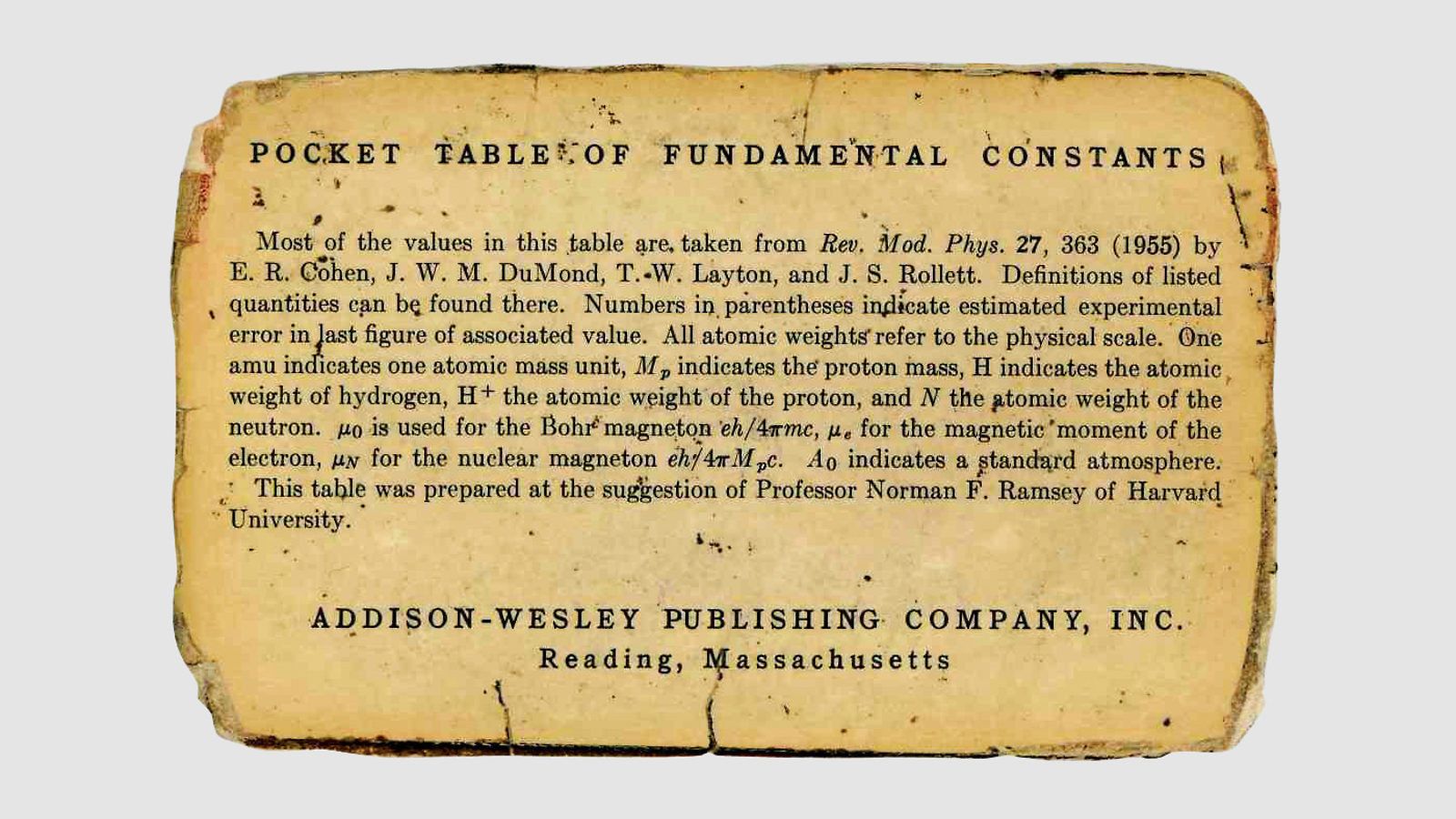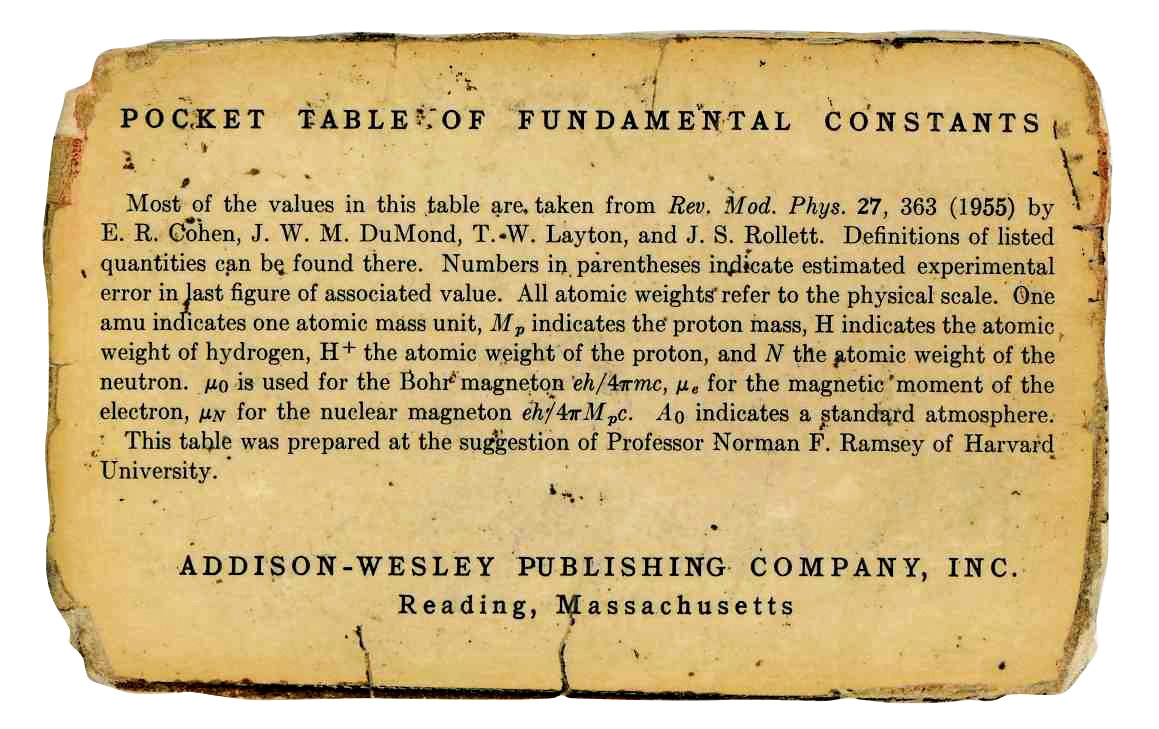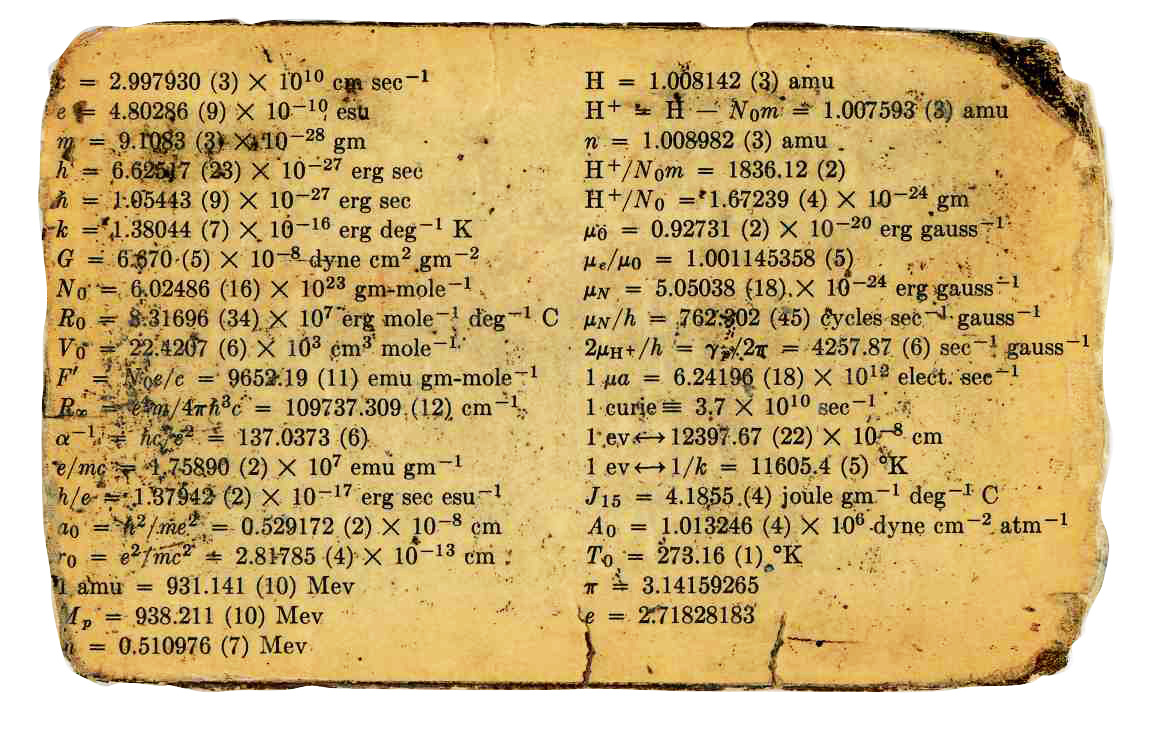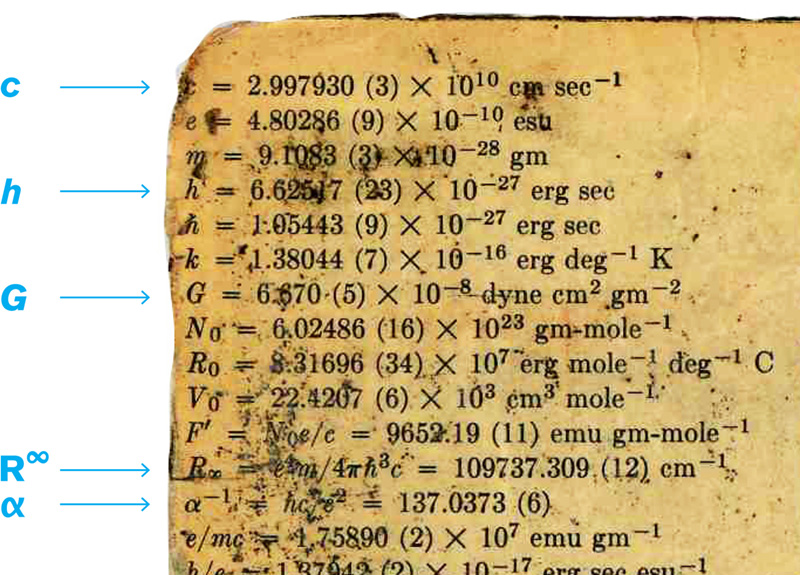Constant changes
In the early 1950s, Nobel-Laureates-to-be Norman Ramsey and Ed Purcell created cards of physical constants they found themselves using most frequently. A few months later, an Addison-Wesley publisher's representative handed Ramsey a card filled with trivia. Ramsey responded, "Why don't you give out something people really want?" The pocket table was born.
Harvey Lynch paid about fifty cents for his table when he was an undergraduate at MIT. Forty years later, now at Stanford Linear Accelerator Center, he still carries it. "I was always using it to find some constant," Lynch says. "Of course, it would come up in the wrong unit and I would have to convert it."
The switch to the SI system has obviated the mixed units. But the bigger change is with the numbers themselves. "These numbers aren't accurate anymore," says Lynch. "I keep the card for purely sentimental value–though π is still good."
Physicists' obsession over what F. K. Richtmyer called in 1932 "the romance of the next decimal place" drives innovations in technology, theoretical calculation, and experimental design. It also uncovers other information along the way: detecting the Lamb shift of energy levels in a hydrogen atom's electron led to the whole foundation of quantum electrodynamics. Our capacity to sense millionths-of-a-degree differences in cosmic microwave radiation lets astrophysicists compose a picture of the early universe.
Some research suggests that α, the fine structure constant, which determines the strength of the electromagnetic force, may have decreased by a few parts in a hundred million since the dawn of time. Its relation to the speed of light would mean c has correspondingly increased. Any such change in nature's "constants," even at such a tiny level, throws physics into a scramble for new theories.
While some may see the pocket table as Ramsey saw the earlier trivia card, this quest for precision, ever furthered by comparing experimental values of constants calculated by different approaches, tests the overall coherence of physics.
Constants
c
What was then a measured value has shifted to a defined quantity. For decades c was measured to a precision of some few parts per billion using wavelengths from krypton-86, but the advent of lasers made the old approach obsolete. Rather than continually choosing more stable transitions, the Bureau International des Poids et Mesuresdecided to fix c, thereby shifting any uncertainty in its value to the definition of a meter. In 1983, delegates for the international body governing such measures made the decision official. At the Conference Generale des Poids et Mesures, the speed of light was defined as exactly 299,792,498 meters per second. No experimental results will alter that value. Conference delegates also redefined the SI unit of the meter, without changing its value, based on this set quantity.
h
Recent findings have landed Planck's constant in the hot seat: values for h, derived from four electrical experiments and one X-ray crystal density experiment with silicon, differ significantly. Such uncertainty calls into question the related physical values. Current work is investigating this discrepancy by measuring anew the volume of highly enriched silicon. The BIPM is looking to fix Planck's constant as a defined quantity by 2011.
G
G, the Newtonian constant of gravitation, was first calculated using results from Henry Cavendish's 1798 experiment to determine Earth's density. Since then, it has seen little refining. G is perhaps the most difficult constant to measure. Strong though it may seem, at the subatomic level gravity's tug barely compares to that of the other fundamental forces. No shield exists to isolate experimental effects from the influence of other bodies' gravity, so G's precision is limited by experimenters knowing exactly what mass surrounds an experiment. Although an unusual result some years ago spurred a host of new experiments, "doing any better than 10 parts per million in precision is tough," says National Institute of Standards and Technology scientist emeritus Barry Taylor.
R∞
Rydberg's constant, R∞, related to the wavelengths of an element's spectral lines, ranks both among the most precise and most improved. Its precision, with an uncertainty of 6.6 parts per trillion, has increased by four and a half orders of magnitude since the pocket table was first published. It owes such gains to advances in theoretical work–particularly predictions of energy levels of the hydrogen atom–that broke new ground for experimental work.
α
The fine structure constant, α, has recently seen a great leap forward in precision to 0.7 parts per billion. The improvement came from a combination of a much better measurement of the electron's magnetic moment μe, with an uncertainty of 0.76 parts per trillion, and a new set of theoretical calculations that relate α to μe. Any more refining by this approach will take a serious commitment: supercomputer calculations conducted over more than 10 years evaluated the 891 Feynman diagrams needed for the theoretical calculation. The next level of precision requires 12,672 diagrams.






